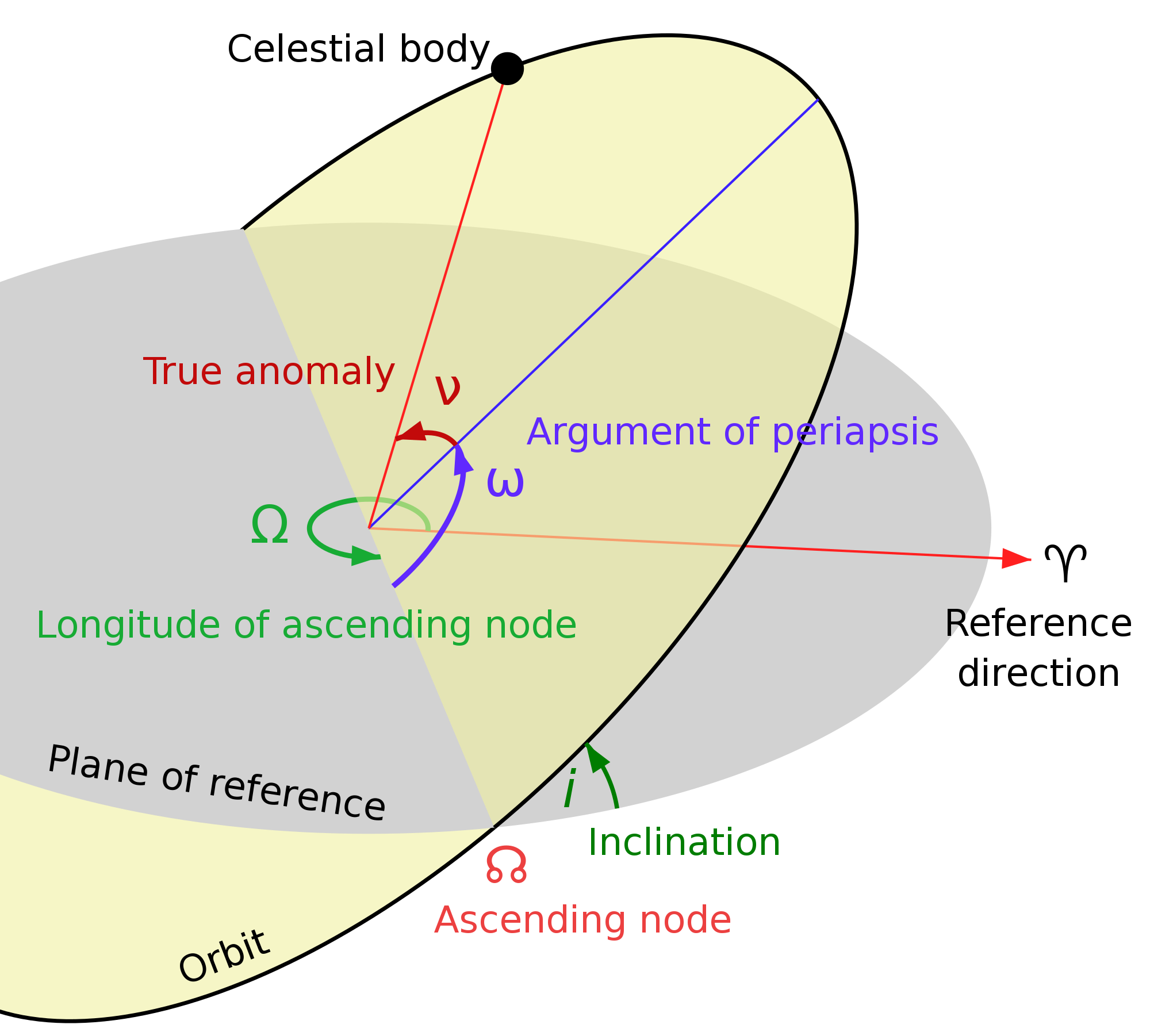|
⇤ ← Revision 1 as of 2013-01-21 18:24:30
Size: 29
Comment:
|
Size: 1427
Comment:
|
| Deletions are marked like this. | Additions are marked like this. |
| Line 1: | Line 1: |
| #format jsmath | |
| Line 2: | Line 3: |
How do we get from any arbitrary orbit to M288? The following techniques may not be optimal for minimal $ \Delta V $, but they set an upper bound. We will assume Kepler orbits and a circular M288 destination orbit, and heavy objects unaffected by light pressure. Actual thinsat orbits are elliptical and precess over a year with J2 and light pressure. || The origin elliptical Kepler orbit has four parameters we need to compute two $ \Delta V $ burns for our transfer orbit: <<BR>><<BR>> * Apogee $ r_a $ <<BR>><<BR>> * Perigee $ r_p $ <<BR>><<BR>> * Inclination $ i $ <<BR>><<BR>> * argument of perigee $ \omega $ <<BR>><<BR>>We can compute the semimajor axis $ a $ and the eccentricity $ e $ from the apogee and perigee <<BR>><<BR>>The angle of the ascending and descending nodes do not affect the $ \Delta V $ burns, though they do affect when we make our burns so we insert into the desired destination region of the M288 orbit.<<BR>><<BR>>|| {{http://upload.wikimedia.org/wikipedia/commons/thumb/e/eb/Orbit1.svg/2000px-Orbit1.svg.png||width=500}} || Manuevers use the least $ \Delta V $ farther out, so we will use different strategies depending on whether the apogee of the origin orbit is higher or lower than the M288 orbit $ r_288 $. === Describing an arbitrary Kepler Orbit === Assume an x,y,z coordinate space and an orbit in the x,z plane: || |
Changing Orbits to M288
How do we get from any arbitrary orbit to M288? The following techniques may not be optimal for minimal \Delta V , but they set an upper bound. We will assume Kepler orbits and a circular M288 destination orbit, and heavy objects unaffected by light pressure. Actual thinsat orbits are elliptical and precess over a year with J2 and light pressure.
The origin elliptical Kepler orbit has four parameters we need to compute two \Delta V burns for our transfer orbit: |
|
Manuevers use the least \Delta V farther out, so we will use different strategies depending on whether the apogee of the origin orbit is higher or lower than the M288 orbit r_288 .
Describing an arbitrary Kepler Orbit
Assume an x,y,z coordinate space and an orbit in the x,z plane:
||

